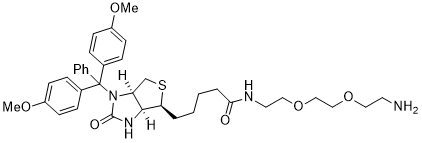Singlet Oxygen Sensor Green (SOSG, CAS 865777-57-7) detects singlet oxygen (1O2) in aqueous solutions. It easily integrates into living mammalian cells, allowing in vivo imaging of intracellular 1O2 for clinical and research applications.
Structure and Mechanism:
- Composition: SOSG includes a fluorophore and an anthracene-derived trapping moiety.
- Mechanism: Without singlet oxygen, the trapping moiety quenches the fluorophore, emitting weak blue fluorescence (excitation/emission: 372/395 and 393/416 nm). When singlet oxygen is present, SOSG forms an endoperoxide, which stops the quenching and triggers green fluorescence (excitation/emission: 504/525 nm).

Selectivity:
SOSG shows high selectivity for singlet oxygen, unlike other probes. It doesn’t react to superoxide (•O2−) or hydroxyl radicals (•OH). However, it activates in alkaline pH or solvents like acetonitrile, DMSO, DMF, and acetone.
Storage and Usage:
- Storage: Store SOSG at −20°C, desiccated and protected from light.
- Preparation: Dissolve 100 µg of SOSG in 33 µl of methanol for a 5 mM stock solution. Prepare working solutions before use, and discard any excess.
- Concentration: Start with a working concentration of 1–10 µM, adjusting as needed.
SOSG offers reliable, selective singlet oxygen detection for intracellular imaging and various clinical uses.
AxisPharm offers 5000+ PEG Linkers with high purity. Different kinds of PEG Reagents may be available by custom synthesis.









